Roman coins serve as invaluable historical artifacts, offering a tangible link to the past. These coins, minted throughout the vast Roman Empire, provide insights into the political, economic, and social dynamics of the time. Their designs encapsulate the essence of Roman life, from the reigns of emperors to religious practices.
The significance of Roman coinage extends beyond mere monetary transactions. Coins were a medium of communication, reflecting the values and achievements of Roman society. Through their imagery and inscriptions, Roman coins reveal the empire’s cultural priorities and ideological messages. As such, they play a crucial role in understanding the complexities of ancient Roman culture, offering a window into the societal norms and beliefs that shaped the empire’s legacy.
Depiction of Roman Deities
Roman coins serve as a canvas for the pantheon of major deities revered in ancient society. Among these, Jupiter, the king of the gods, is frequently portrayed wielding a thunderbolt, symbolizing his supreme authority and power. Similarly, Juno, his divine consort, often appears with a peacock, epitomizing her roles in protection and motherhood.
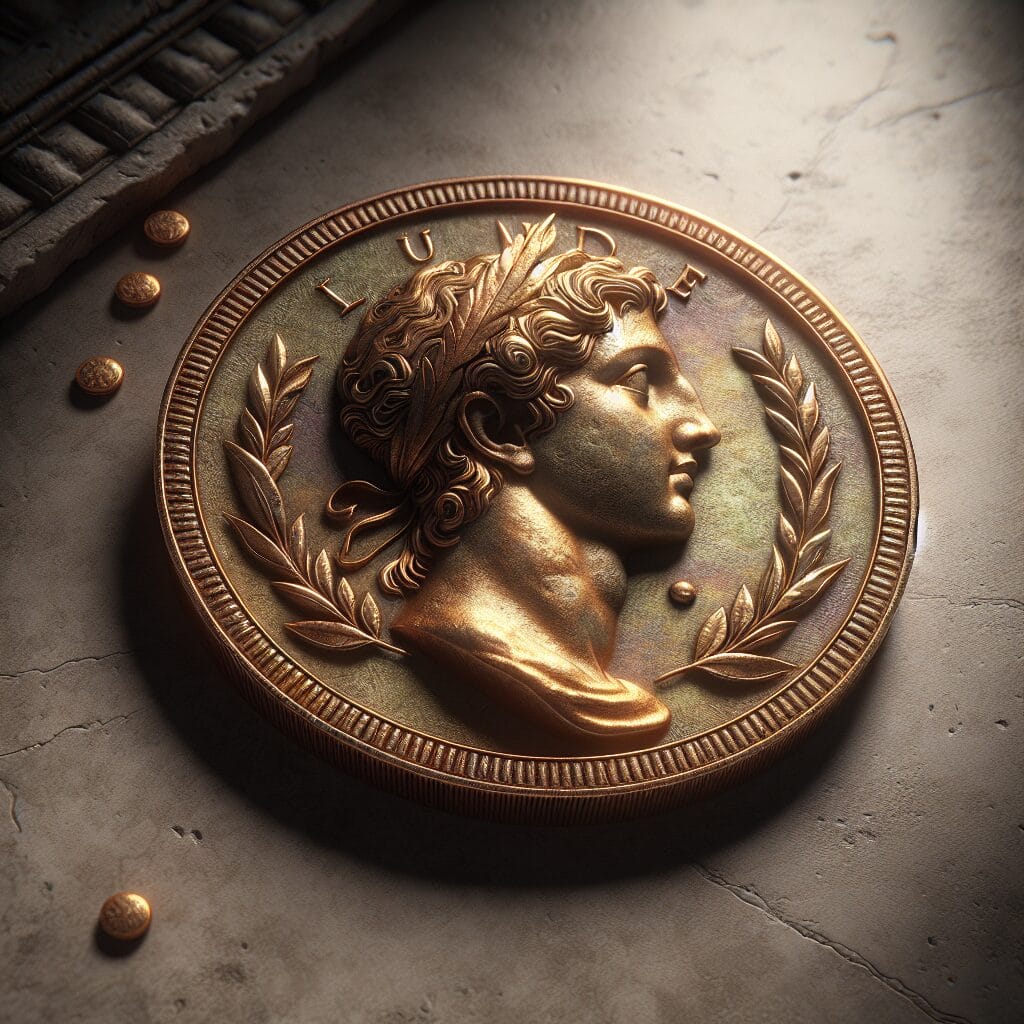
The god of war, Mars, is depicted in armor, embodying military strength and valor, while Venus, the goddess of love and beauty, is adorned with symbols of romance and fertility, underscoring her societal importance. Mercury, known for his winged sandals, illustrates the significance of trade and communication, and Minerva, accompanied by an owl, represents wisdom and strategic warfare.
These deities were integral to Roman society, influencing political, familial, and agricultural practices. Roman leaders often invoked divine favor to legitimize their rule, while household worship of deities reflected the deep-rooted cultural norms of familial and agricultural prosperity. Thus, Roman coins not only honored these divine figures but also served as a medium to communicate the ideals and values central to Roman life.
Symbolism on Roman Coins
Roman coins are adorned with a myriad of symbols that offer profound insights into the beliefs and values of ancient Roman society. These symbols served as more than mere decoration; they were powerful tools of communication and propaganda.
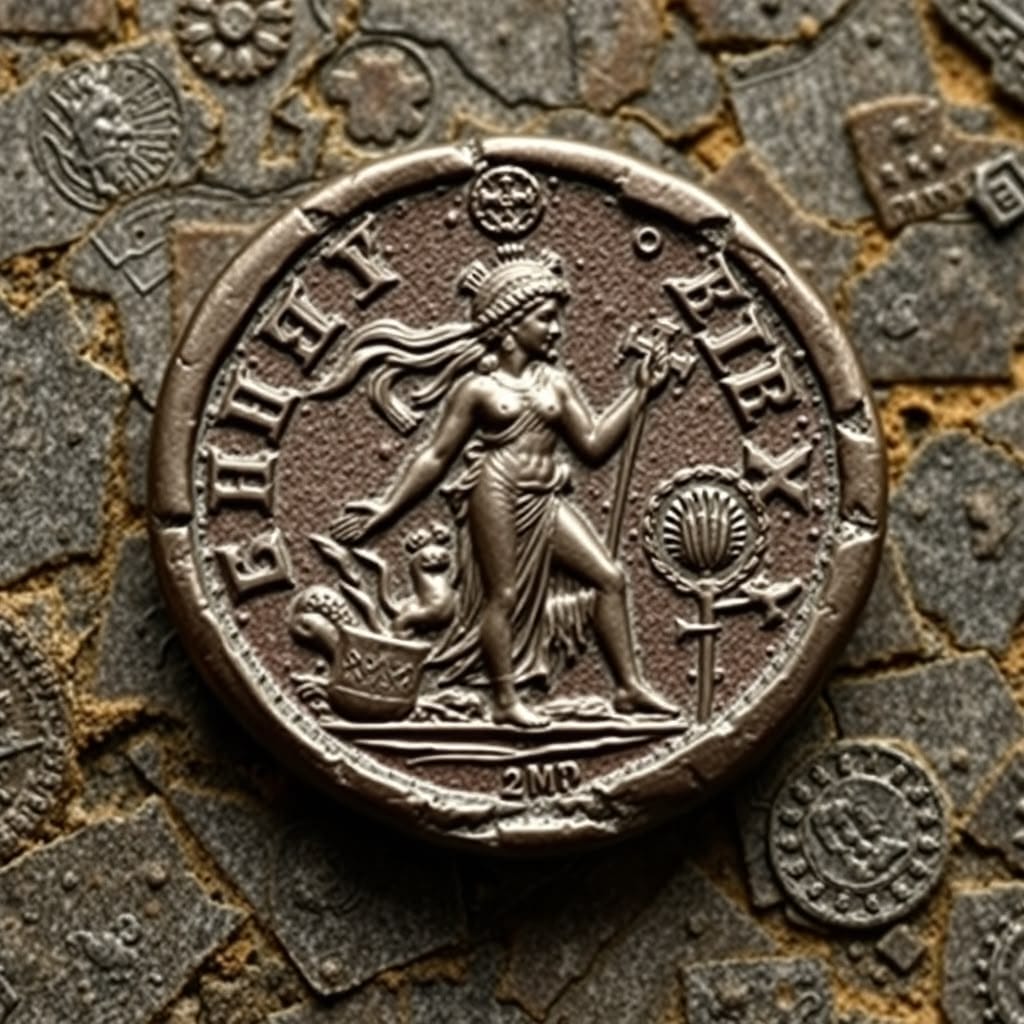
- Laurel Wreath: A symbol of victory and honor, often linked with emperors and military triumphs.
- Eagle: Emblematic of power and authority, frequently associated with the might of the Roman Empire.
- Minerva: Depicted to represent wisdom and warfare, signifying protection and strategy.
- Victory: A winged figure symbolizing triumph in battles and conquests.
- Caduceus: Symbolizes commerce and negotiation, often seen on coins related to trade.
- Cornucopia: Represents abundance and prosperity, conveying wealth and good fortune.
- She-wolf and Twins: Recalling the legendary founding of Rome, linked to Romulus and Remus.
- Chariot: Denotes victory in games and military success.
These symbols not only reflected the cultural values and societal ideals of Rome—such as military valor, divine favor, and civic pride—but also reinforced the emperor’s power and the empire’s achievements. By illustrating these themes, Roman coins were instrumental in shaping the identity and unity of the Roman populace.
Cultural Messaging Through Coinage
In ancient Rome, coins transcended their role as mere currency, functioning as potent tools for political propaganda. Emperors strategically employed coinage to disseminate messages that highlighted their achievements and reinforced their divine favor. By featuring imperial imagery and symbolic motifs, these coins served to solidify the ruler’s authority and foster a connection with the populace. For instance, portraits of emperors on coins helped create a sense of loyalty and unity across the empire.
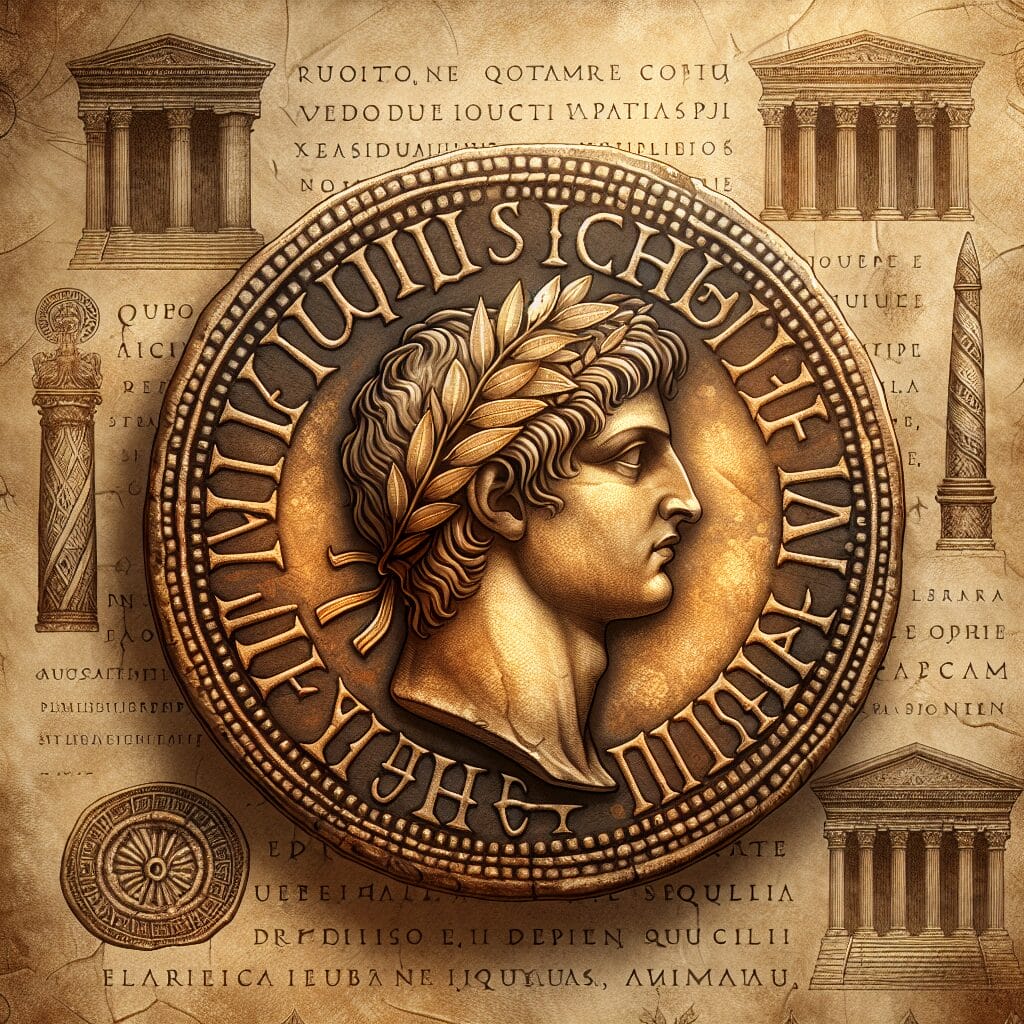
Beyond personal glorification, coins also conveyed broader messages about Roman society and values. They depicted symbols of military victories, reinforcing the strength and resilience of the Roman legions. Coins also illustrated civic pride by featuring important monuments and public works, underscoring Rome’s status as a center of civilization. Such imagery promoted the idea of Rome as a bastion of culture and prowess.
Moreover, coins often included religious symbols, emphasizing the divine approval of the emperor’s rule. This connection between state and religion not only legitimized the emperor’s position but also instilled a sense of national pride and unity among citizens. Through these multifaceted messages, Roman coins effectively communicated the values and achievements of the empire, shaping public perception and reinforcing the political narrative of the time.
Case Study: Coins of Augustus
The coins minted during Augustus’s reign played a crucial role in projecting his image and authority across the Roman Empire. These coins prominently featured his portrait, often adorned with a laurel wreath, a symbol of victory and peace, underscoring his military successes and the establishment of the Pax Romana.
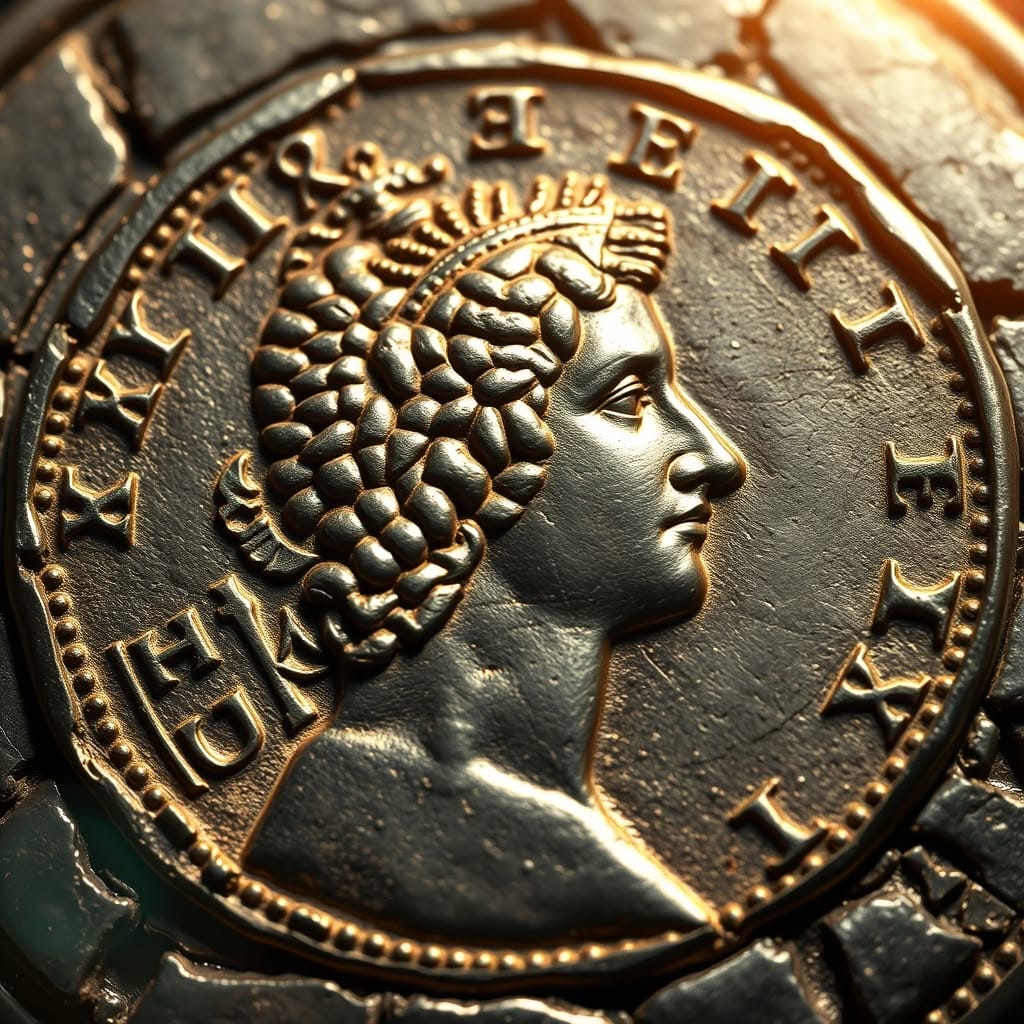
Inscriptions on these coins were meticulously crafted to convey Augustus’s legitimacy and divine favor. Titles such as “Imperator” and “Augustus” were inscribed, emphasizing his commanding authority and divine connection, asserting that his rule was sanctioned by the gods. This strategic use of coinage served as a form of political propaganda, reinforcing loyalty among the populace and legitimizing his leadership after the civil wars.
Religious themes were also prevalent, as Augustus depicted deities like Mars, Venus, and Apollo, linking his reign to divine favor. These religious symbols, coupled with messages of peace and prosperity, highlighted Augustus’s role as both a political leader and a divine mediator. Thus, Augustus’s coins were not merely currency but instruments of political and religious messaging, uniting the empire under his rule.
Emperors and Divine Association
The concept of emperor worship was a fundamental aspect of Roman culture, intertwined with both political and religious life. This practice established the emperor not only as a political leader but also as a divine figure, deserving of reverence akin to that offered to the gods. This divinization of emperors served to legitimize their authority and unite the populace under a common religious and civic duty.
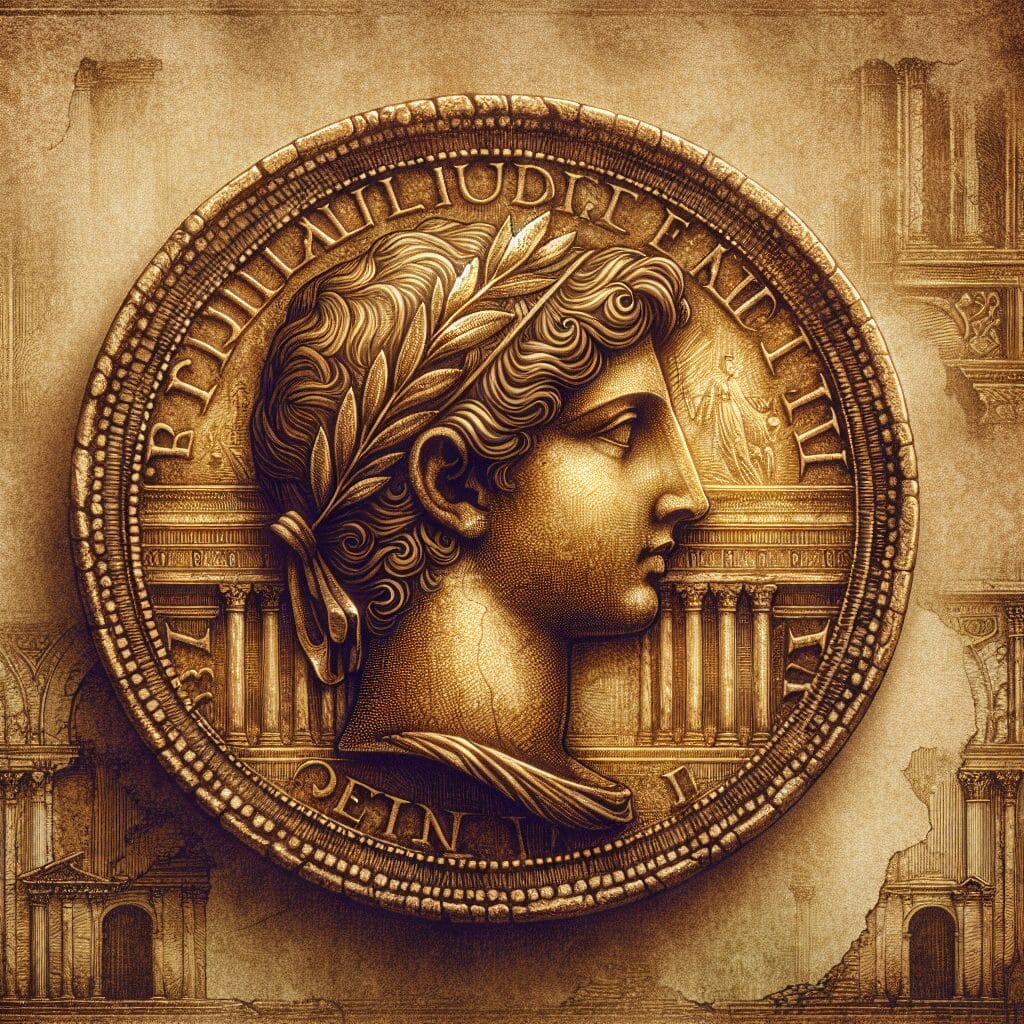
Roman coins played a pivotal role in this process, functioning as instruments to deify emperors. By featuring imagery and inscriptions that depicted emperors alongside gods or with divine symbols, coins reinforced the notion that the emperor was favored by the divine. For instance, coins from Augustus’s reign often included depictions of deities like Apollo or Mars, aligning his rule with divine sanction and portraying him as a mediator between the gods and the people.
Through these numismatic representations, emperors were not merely rulers but embodiments of divine will and protectors of Roman values. This strategic use of coinage helped solidify the emperor’s divine status and fostered loyalty and unity among the empire’s citizens.
Religious Festivals on Coins
Roman coins frequently depicted religious festivals and rituals, serving as tangible reminders of the empire’s rich ceremonial traditions. These coins often illustrated scenes from significant religious events, such as the Ludi Romani, games held in honor of Jupiter, or the Parilia festival, celebrating the founding of Rome. Such depictions were not merely artistic choices but deliberate efforts to embed religious observance into the daily lives of Roman citizens.
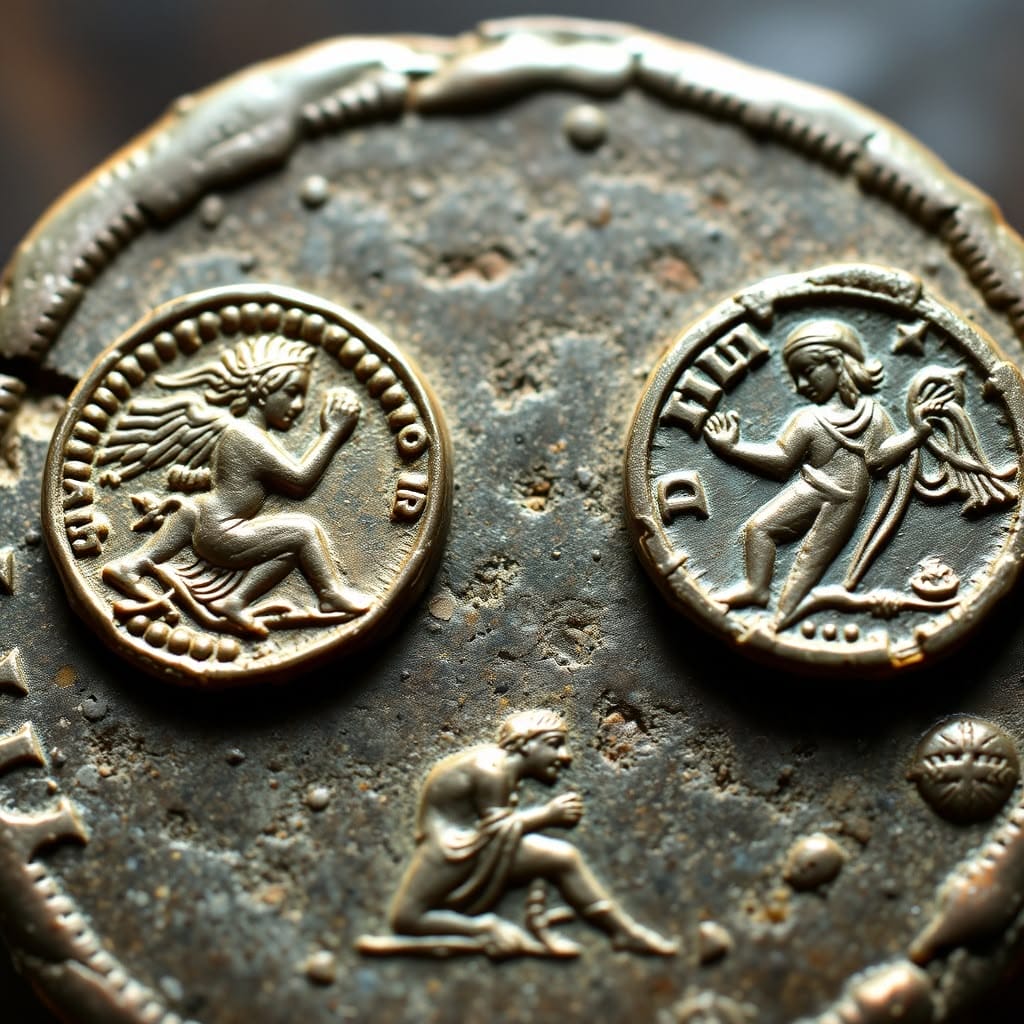
The inclusion of these festivals on coinage was significant in promoting and preserving the religious life of Rome. By circulating coins that featured these sacred events, the Roman authorities reinforced the importance of religious observance and piety among the populace. This practice also served to unify the empire under a shared cultural and religious identity, fostering a sense of communal participation in the divine traditions.
Thus, coins became more than just currency; they were instruments that perpetuated the sacred rituals and festivals integral to Roman society, ensuring that these traditions remained an enduring part of the cultural fabric.
Mythological Narratives on Coins
Roman coinage served as a canvas for illustrating mythological narratives, offering glimpses into the rich tapestry of Roman mythology. Coins frequently depicted scenes from popular myths, featuring deities like Mars, Venus, and Apollo, each embodying various aspects of life, power, and morality. These depictions were not merely decorative; they were deliberate choices that communicated the cultural and religious ethos of the Roman world.

The presence of mythological themes on coins played a significant role in shaping Roman cultural identity. By immortalizing these myths in everyday currency, the Romans reinforced a shared cultural heritage and collective identity among their citizens. The myths served as moral exemplars, emphasizing virtues such as bravery, wisdom, and piety, which were central to Roman values. Additionally, the association with divine figures on coins helped consolidate the political power of rulers, like Augustus, by linking their reign to the favor of the gods.
Thus, Roman coins were more than monetary tools; they were vital instruments in preserving and promoting the rich mythological traditions that defined Roman society, fostering a sense of unity and continuity across the empire.
Influence of Foreign Deities
The adoption of foreign deities by the Romans was a direct result of their expansive conquests. As Rome expanded, it absorbed diverse cultures and religious beliefs from conquered territories. This exposure led to a cultural exchange, where local gods were often equated with Roman deities through a process known as syncretism. Such integration was not only religious but also a strategic political tool, ensuring the acceptance and pacification of newly acquired lands.
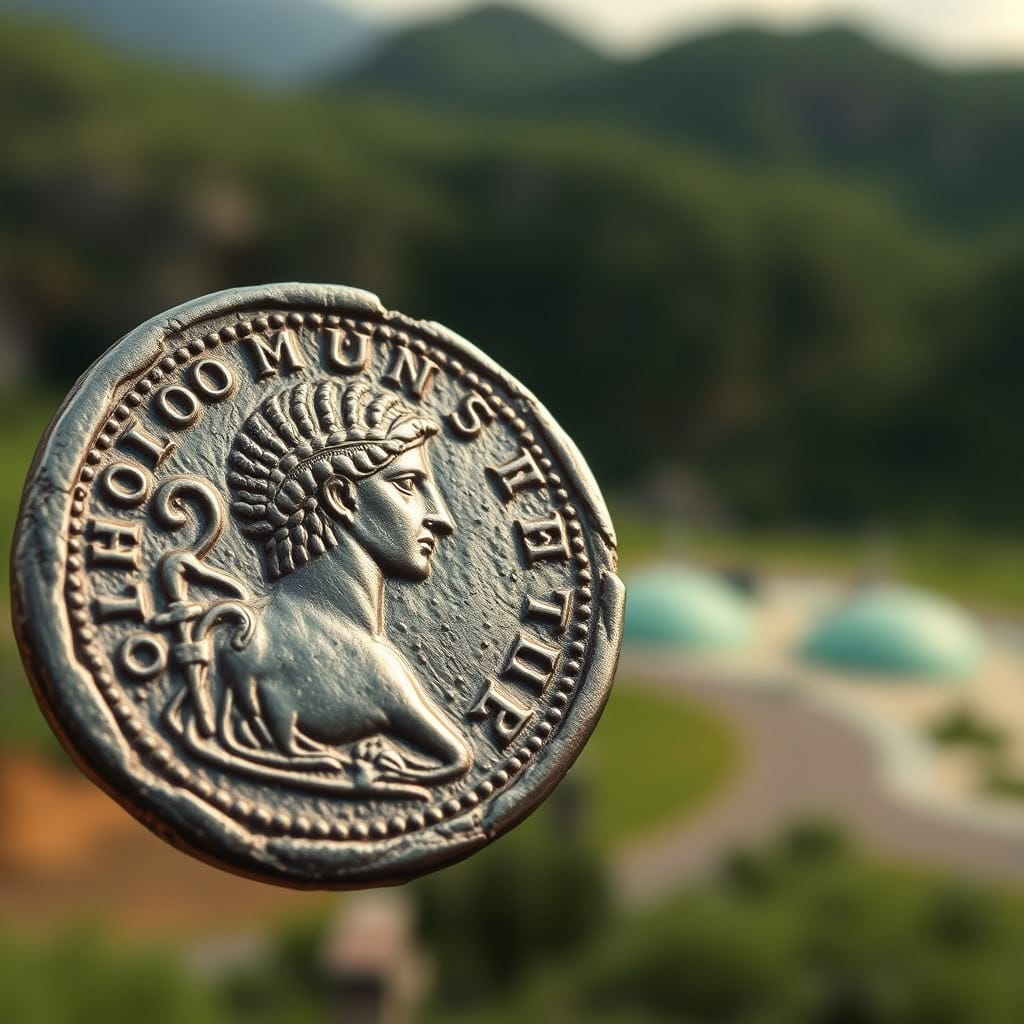
The integration of these deities into Roman religious practices was multifaceted. Foreign gods were often worshipped using existing Roman rituals, facilitating their acceptance among the populace. This ritual adaptation included festivals and ceremonies that honored both traditional Roman gods and newly adopted ones. Temples dedicated to these deities were constructed, reflecting Rome’s cosmopolitan nature and its openness to new ideas.
Overall, the inclusion of foreign deities enriched Roman religious life, enhancing its spiritual landscape and showcasing the empire’s adaptability. The blend of beliefs not only reinforced political unity but also illustrated the dynamic nature of Roman culture and its willingness to embrace diversity.
Evolution of Coin Symbols
Roman coins serve as invaluable records of the shifting political and cultural landscapes throughout the empire’s history. As Rome expanded its territories, the symbols depicted on coins evolved to reflect these changes. Initially, Roman coins featured imagery of Roman deities and traditional symbols that reinforced the state’s power and divine favor. However, as the empire encountered new cultures, the coins began to incorporate a wider array of imagery.
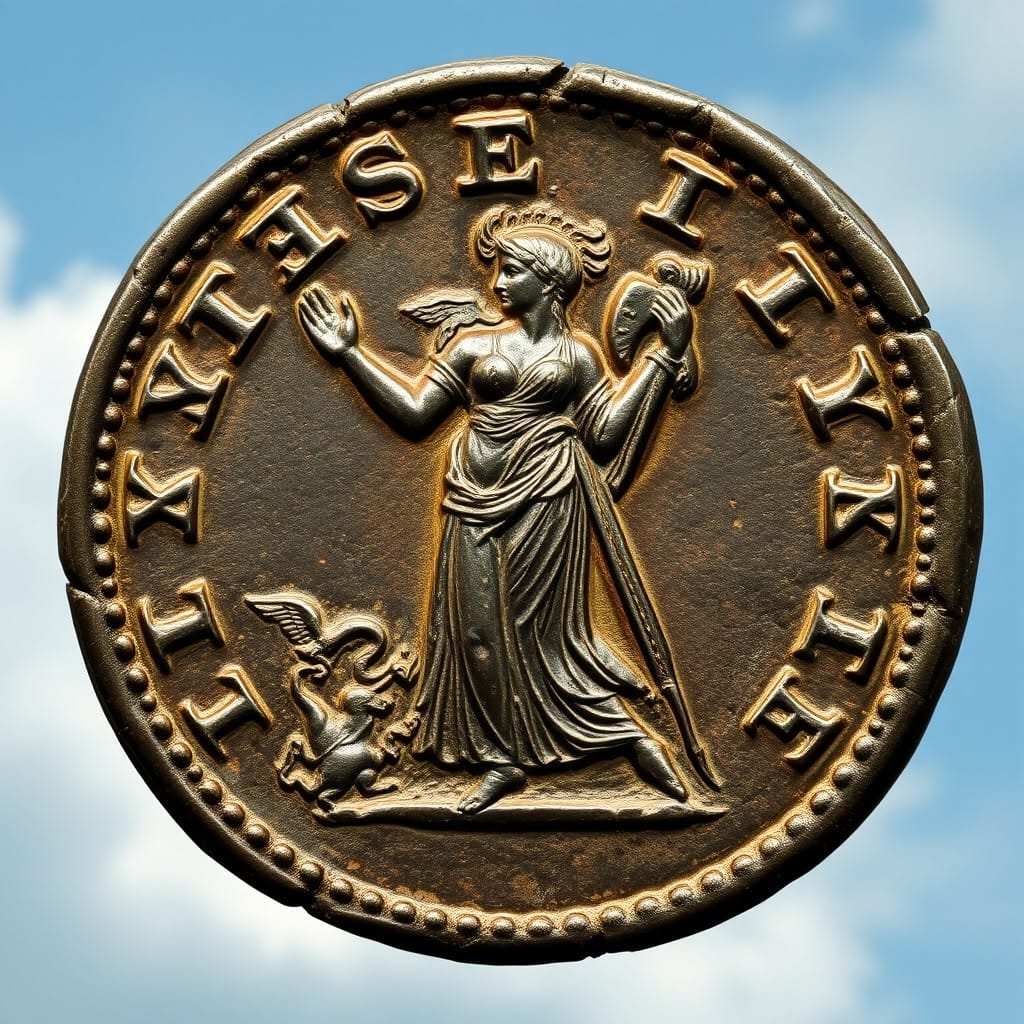
T
he integration of foreign symbols and deities onto Roman coinage is indicative of the empire’s syncretic approach to religion and governance. For instance, the syncretism between Roman and local deities was often reflected in the coins, which served not only as currency but as political tools to promote unity and acceptance within the empire. These changes in coin symbols mirrored the broader cultural exchanges and political strategies employed by the Romans to integrate and pacify newly acquired territories.
Thus, the evolution of symbols on Roman coins is a testament to the empire’s adaptability and its dynamic interaction with diverse cultures. This adaptability was crucial for maintaining the empire’s cohesion and reflects the complex interplay between politics, religion, and culture in ancient Rome.
Interpreting Coin Inscriptions
Roman coins offer a rich tapestry of historical insights, primarily through their Latin inscriptions. These inscriptions provide critical information about the era’s political, religious, and cultural contexts. Deciphering these texts involves understanding the Latin language and recognizing common abbreviations and titles used in Roman numismatics.
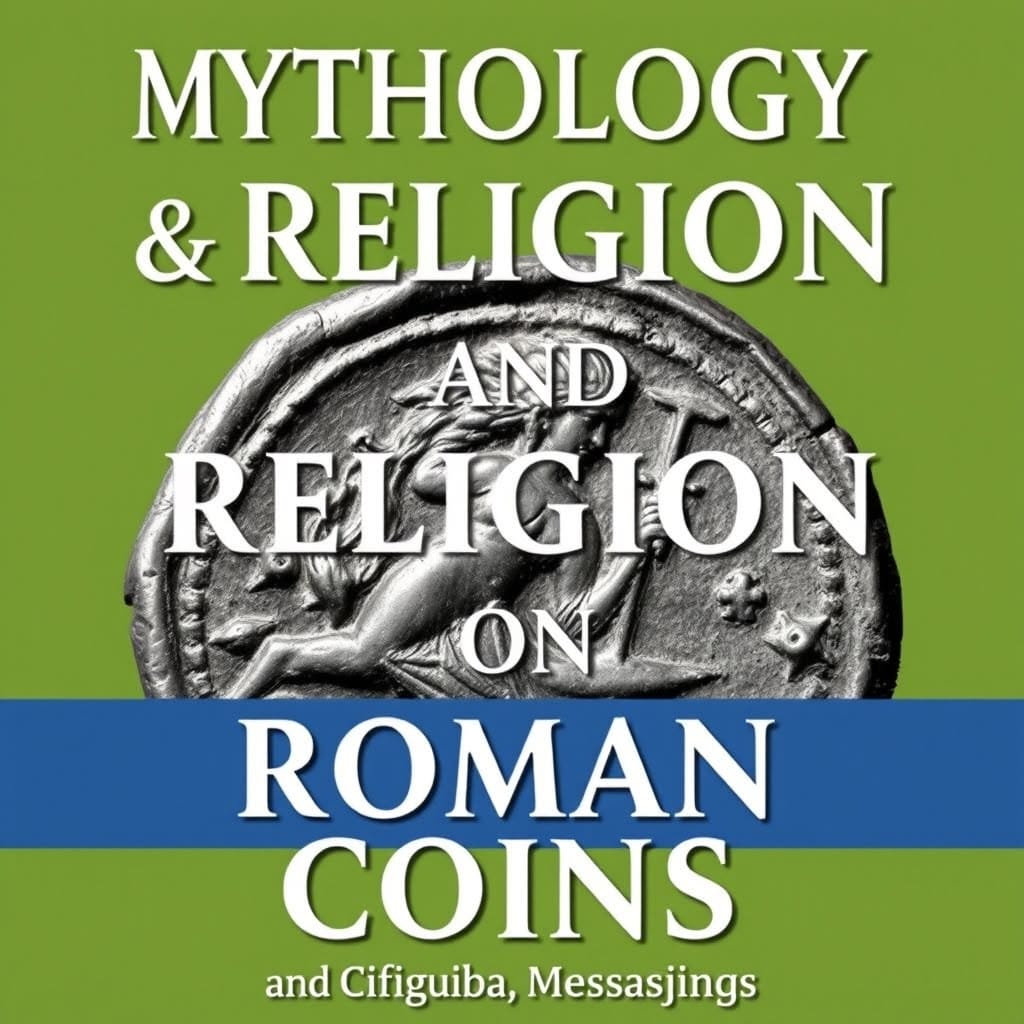
The inscriptions typically include the name of the emperor, his titles, and sometimes his achievements or divine associations. For instance, the title “IMP” stands for “Imperator,” denoting military command, while “PONT MAX” signifies “Pontifex Maximus,” the chief priest of Rome. Such titles not only highlight the emperor’s roles but also reflect the intertwining of political and religious authority in Roman society.
Understanding the historical context is equally essential. Coins often commemorate significant events, such as victories or alliances, and serve as propaganda tools to disseminate the emperor’s image and achievements across the empire. By analyzing these inscriptions, historians gain valuable insights into the priorities and values of the time, illustrating how coins were not merely monetary instruments but also carriers of cultural messaging.
Academic Significance of Roman Coins
Roman coins hold immense value in historical research, serving as tangible links to the past. These artifacts offer a unique glimpse into the political, economic, and cultural landscapes of ancient Rome. Through their inscriptions and imagery, coins provide critical evidence for understanding the reigns of emperors, historical events, and cultural shifts within the empire.
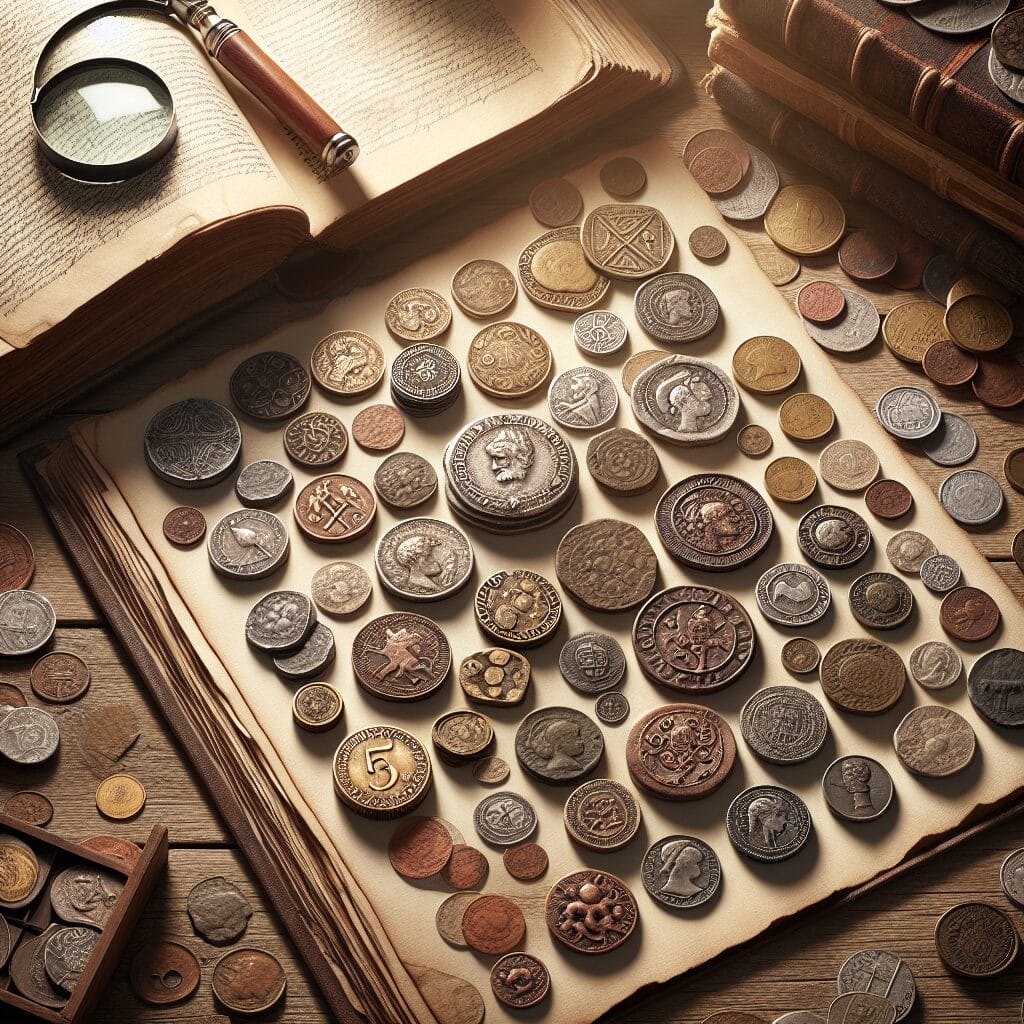
Coins are pivotal in uncovering insights into the ancient Roman economy. They reveal information about trade networks, economic stability, and societal hierarchies. The denomination, metal content, and minting locations of coins offer clues about economic conditions and monetary policies of the era. Furthermore, the widespread distribution of coins across the Roman Empire illustrates the extent of Roman influence and the integration of diverse regions.
In addition to economic insights, Roman coins shed light on societal values and religious beliefs. The depiction of deities and symbols on coins reflects the religious syncretism and cultural messaging of the time. As such, they provide historians with a comprehensive understanding of how Romans viewed their gods, leaders, and the world around them, enhancing our knowledge of ancient Roman society.
Data and Statistics on Coin Discoveries
The study of Roman coins continues to uncover significant insights into ancient civilization. Although no recent discoveries have been reported, the existing collections offer a wealth of information. Roman coins have been unearthed in various locations, each providing a window into the societal and economic aspects of the Roman Empire.
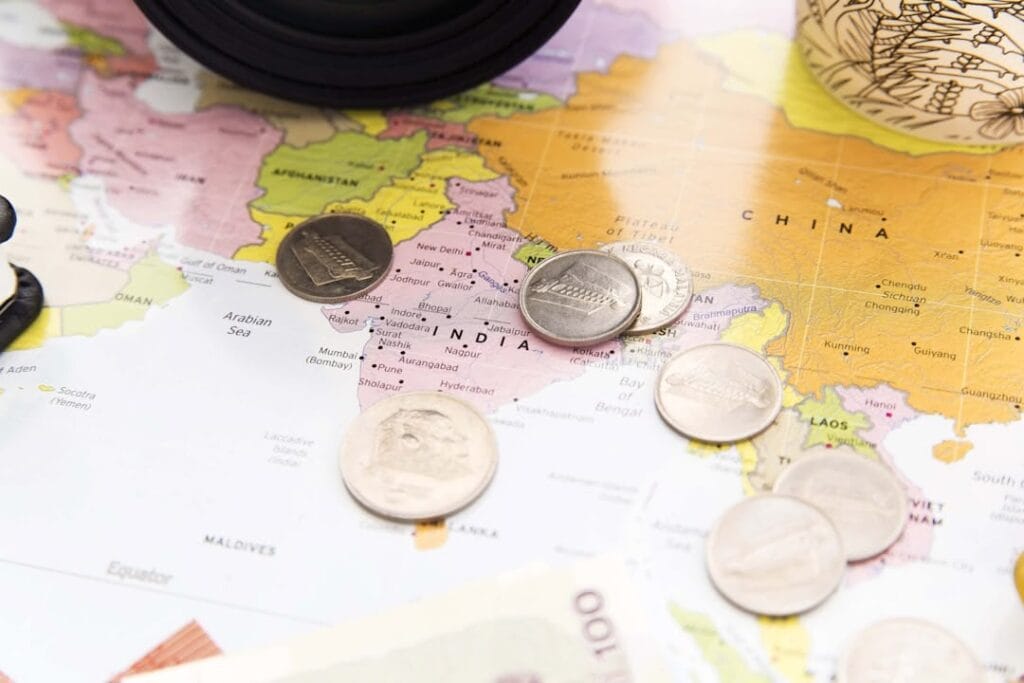
Coins have been commonly found in major urban centers such as Rome, Alexandria, and Carthage, highlighting these cities as bustling hubs of economic activity. Additionally, discoveries at military sites indicate the use of coinage for logistical and supply transactions, emphasizing the army’s role in the broader economy. In rural areas, coins often appear in hoards, suggesting localized trade and economic practices.
The distribution of coins across the empire also extends to its borders, signifying trade with neighboring cultures and illustrating the far-reaching influence of Roman economic systems. These findings illustrate the integration of various regions into the Roman imperial structure, enhancing our understanding of how Roman coins served not only as currency but also as tools of cultural and economic integration.
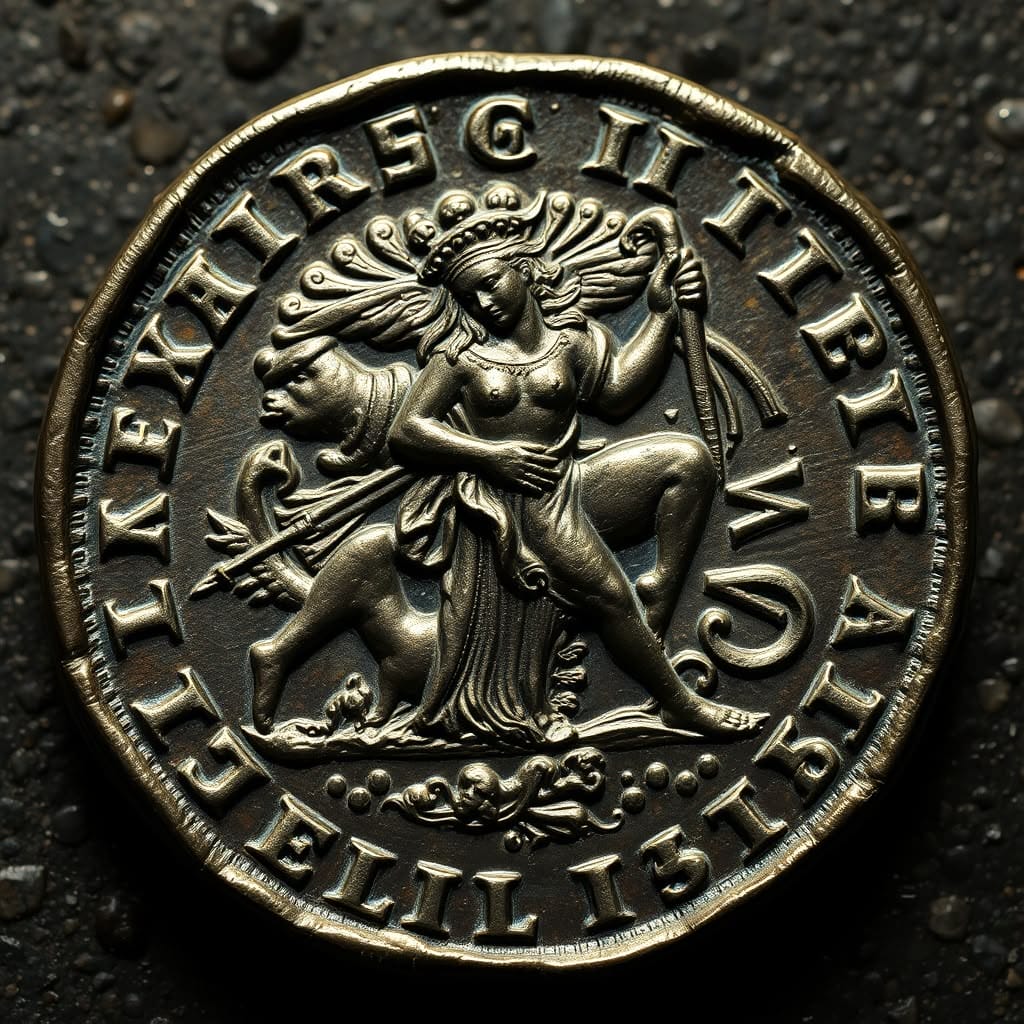
Conclusion: Roman Coins as Cultural Artifacts
Throughout this exploration of Roman coinage, we have seen how coins serve as vivid reflections of mythology and religion, illustrating the pivotal roles of deities and symbols in Roman society. Coins were not merely economic instruments; they conveyed cultural and political messages, such as the divine status of emperors and the celebration of religious festivals. Additionally, they highlighted the geographical significance of the Roman Empire’s reach and influence.
Roman coins thus offer invaluable insights into the empire’s cultural and religious landscape. Their imagery and inscriptions provide a window into the societal values and beliefs of ancient Rome. As such, they remain crucial artifacts in understanding how the Romans intertwined their religious practices with daily life and governance.
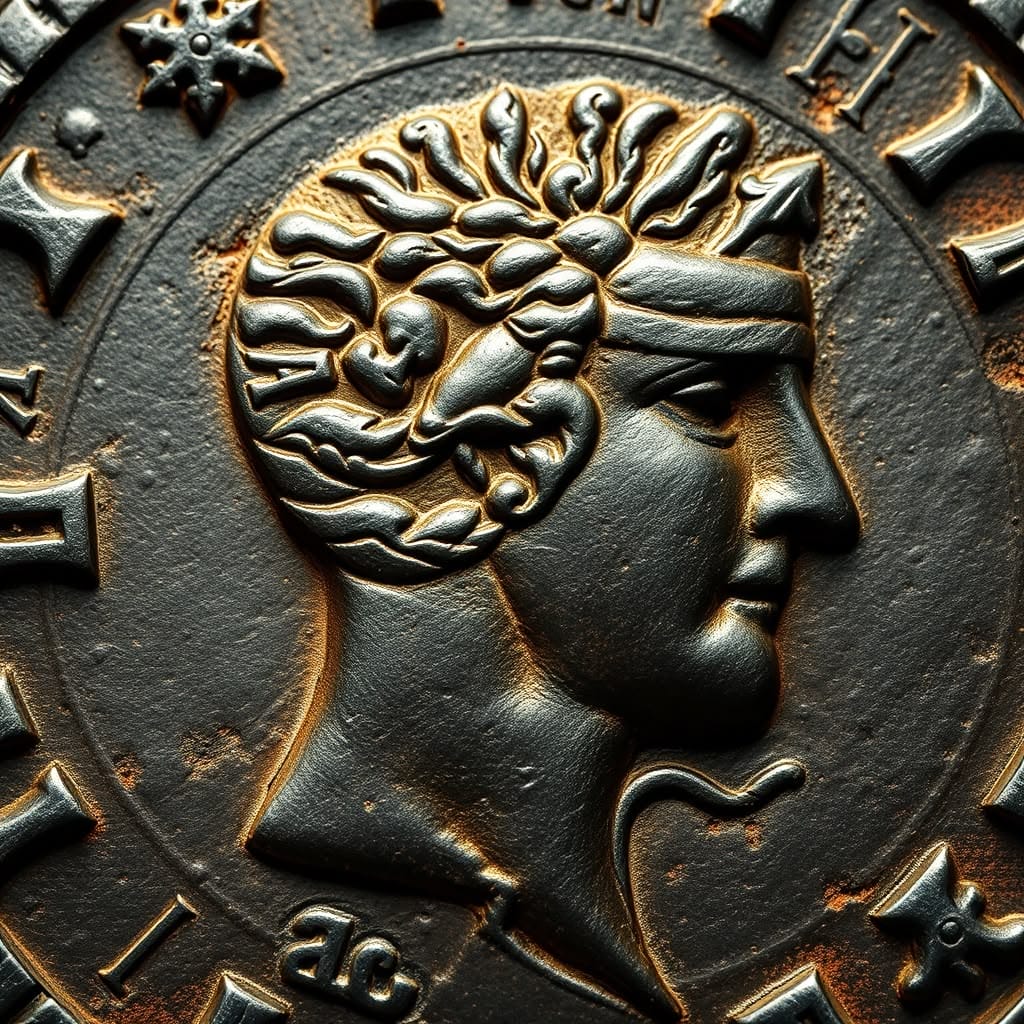
FAQ Section
Understanding Roman coins can be complex due to their rich history and symbolism. Below are some common questions and clarifications about these fascinating artifacts.
What were Roman coins made from? Roman coins were typically minted from metals such as gold, silver, and bronze. The material often indicated the coin’s value and the economic conditions of the period.
Why do Roman coins feature gods and goddesses? Deities were prominently displayed on Roman coins to reflect the religious beliefs and cultural values of the empire. These images served as a way to honor the gods and assert their presence in daily life.
What do the symbols on Roman coins represent? Symbols on Roman coins often conveyed messages of power, victory, or prosperity. For instance, the depiction of an eagle might symbolize imperial power, while a laurel wreath could represent victory.
How can Roman coins help us understand myths? The illustrations on coins often depict scenes from Roman mythology, offering insights into the cultural narratives and values of that era.
For further insights into the geographical significance of Roman coin discoveries, you may refer to this source. Additionally, for the latest findings related to Roman coins, consider checking this article. These questions highlight the multifaceted roles of Roman coins as carriers of mythology and cultural symbolism, integral to understanding the Roman Empire’s societal dynamics.

